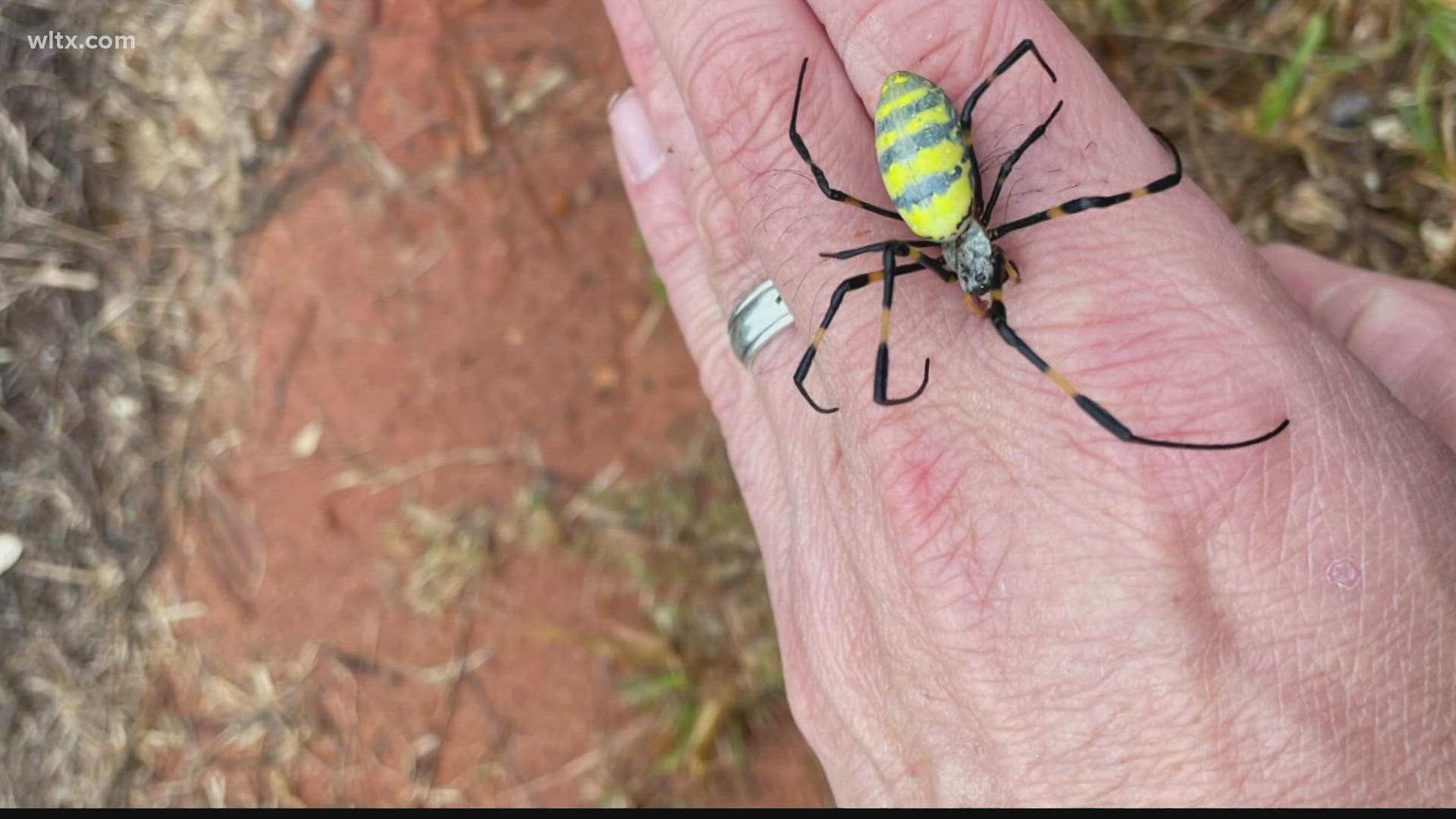ATHENS, Ga. — They're large, have eight legs, and, to some, are considered a frenemy to mankind. Now, new research says a large invasive spider will likely become a much more common sight across the east coast.
New research conducted by University of Georgia scientists suggests the Joro spider, which first landed in the United States in 2013, will not only be common in that state but also on the coast - a coast that includes South Carolina.
WLTX and CBS first introduced you to your soon-to-be neighbor in late 2021, as the very distinctively-marked arachnids began popping up in Georgia. Females, in fact, tend to have yellow, blue, and red markings on their bodies. They can also grow to be about three inches long, to the dismay of arachnophobes everywhere.
But, as researchers recently pointed out at the University of Georgia, they may be one of the few invasive species that don't have a significant impact on their environment.
Andy Davis, who is a corresponding author of the study and research scientist, suggested they don't appear to have a major impact on local food webs or ecosystems.
His advice: Learn to live with them.
“If they’re literally in your way, I can see taking a web down and moving them to the side, but they’re just going to be back next year.”
But what makes these long-legged travelers so hardy? The UGA study published in Physiological Entomology contrasts the Joro spider with the golden silk spider - a relative that's been in the area for 160 years.
And one big difference is that the new spider on the block has a much higher metabolism that appears to make it more tolerant to the cold. So where the golden silk spider is hemmed into warmer climates, the Joro can exist in places that would be less hospitable. And that means it might not just be a problem for the Southeast for very long.
Looking at its native habitats in Japan, experts believe the Joro spider can likely exist considerably further north.
“Just by looking at that, it looks like the Joros could probably survive throughout most of the Eastern Seaboard here, which is pretty sobering,” Davis said in a UGA interview.
Not just that, they can likely hitch a ride to other parts of the country in much the same way they ended up in the coastal wood and wetlands - by ship and transport truck.
But a co-author of the study, Benjamin Frick, urges the public not to go on the offensive, since these unusual inhabitants, though menacing to some, aren't harmful.
Frick told the University that there's "really no reason to go around actively squishing them."
"Humans are at the root of their invasion," he said. "Don't blame the Joro spider."

